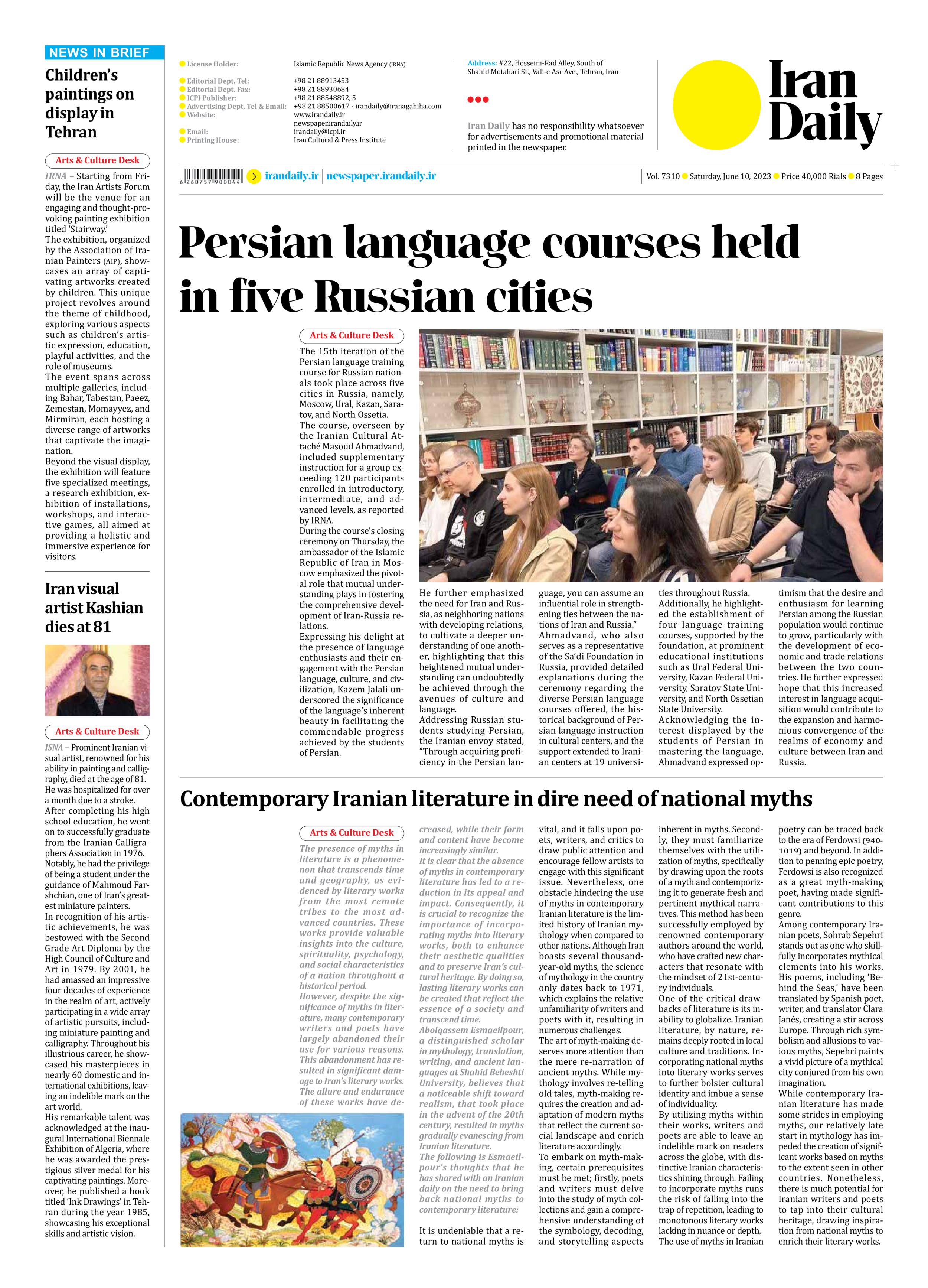
Contemporary Iranian literature in dire need of national myths
The presence of myths in literature is a phenomenon that transcends time and geography, as evidenced by literary works from the most remote tribes to the most advanced countries. These works provide valuable insights into the culture, spirituality, psychology, and social characteristics of a nation throughout a historical period.
However, despite the significance of myths in literature, many contemporary writers and poets have largely abandoned their use for various reasons. This abandonment has resulted in significant damage to Iran’s literary works. The allure and endurance of these works have decreased, while their form and content have become increasingly similar.
It is clear that the absence of myths in contemporary literature has led to a reduction in its appeal and impact. Consequently, it is crucial to recognize the importance of incorporating myths into literary works, both to enhance their aesthetic qualities and to preserve Iran’s cultural heritage. By doing so, lasting literary works can be created that reflect the essence of a society and transcend time.
Abolqassem Esmaeilpour, a distinguished scholar in mythology, translation, writing, and ancient languages at Shahid Beheshti University, believes that a noticeable shift toward realism, that took place in the advent of the 20th century, resulted in myths gradually evanescing from Iranian literature.
The following is Esmaeilpour’s thoughts that he has shared with an Iranian daily on the need to bring back national myths to contemporary literature:
It is undeniable that a return to national myths is vital, and it falls upon poets, writers, and critics to draw public attention and encourage fellow artists to engage with this significant issue. Nevertheless, one obstacle hindering the use of myths in contemporary Iranian literature is the limited history of Iranian mythology when compared to other nations. Although Iran boasts several thousand-year-old myths, the science of mythology in the country only dates back to 1971, which explains the relative unfamiliarity of writers and poets with it, resulting in numerous challenges.
The art of myth-making deserves more attention than the mere re-narration of ancient myths. While mythology involves re-telling old tales, myth-making requires the creation and adaptation of modern myths that reflect the current social landscape and enrich literature accordingly.
To embark on myth-making, certain prerequisites must be met; firstly, poets and writers must delve into the study of myth collections and gain a comprehensive understanding of the symbology, decoding, and storytelling aspects inherent in myths. Secondly, they must familiarize themselves with the utilization of myths, specifically by drawing upon the roots of a myth and contemporizing it to generate fresh and pertinent mythical narratives. This method has been successfully employed by renowned contemporary authors around the world, who have crafted new characters that resonate with the mindset of 21st-century individuals.
One of the critical drawbacks of literature is its inability to globalize. Iranian literature, by nature, remains deeply rooted in local culture and traditions. Incorporating national myths into literary works serves to further bolster cultural identity and imbue a sense of individuality.
By utilizing myths within their works, writers and poets are able to leave an indelible mark on readers across the globe, with distinctive Iranian characteristics shining through. Failing to incorporate myths runs the risk of falling into the trap of repetition, leading to monotonous literary works lacking in nuance or depth.
The use of myths in Iranian poetry can be traced back to the era of Ferdowsi (940-1019) and beyond. In addition to penning epic poetry, Ferdowsi is also recognized as a great myth-making poet, having made significant contributions to this genre.
Among contemporary Iranian poets, Sohrab Sepehri stands out as one who skillfully incorporates mythical elements into his works. His poems, including ‘Behind the Seas,’ have been translated by Spanish poet, writer, and translator Clara Janés, creating a stir across Europe. Through rich symbolism and allusions to various myths, Sepehri paints a vivid picture of a mythical city conjured from his own imagination.
While contemporary Iranian literature has made some strides in employing myths, our relatively late start in mythology has impeded the creation of significant works based on myths to the extent seen in other countries. Nonetheless, there is much potential for Iranian writers and poets to tap into their cultural heritage, drawing inspiration from national myths to enrich their literary works.







